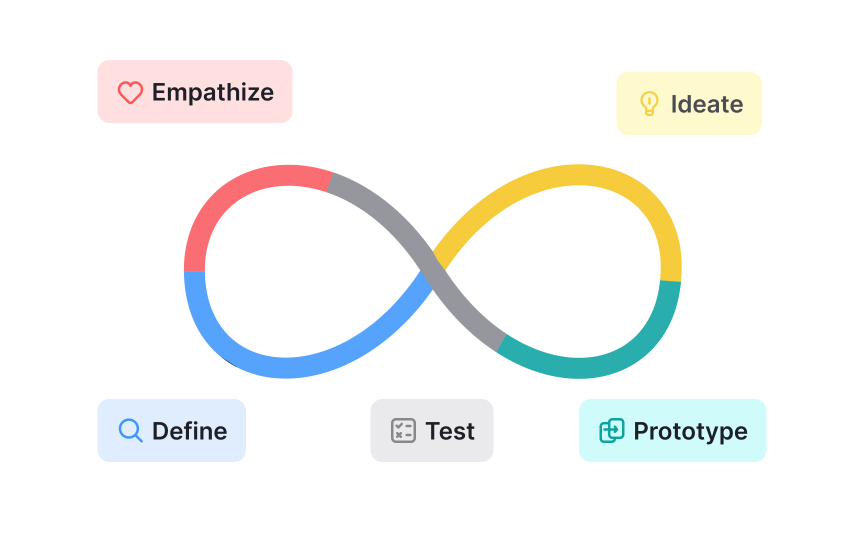Design thinking process
Design thinking transforms complex problems into human-centered solutions through an iterative approach. This methodology shifts teams from solving assumed problems to addressing real user needs through systematic exploration and testing.
Here are the steps involved:
- Empathize with users. Conduct research through interviews, observations, and surveys to understand user challenges, behaviors, and motivations firsthand.
- Define the problem. Synthesize research insights into clear problem statements that capture user needs. For example, "Young professionals need a way to track expenses because traditional budgeting apps are too complex."
- Ideate solutions. Generate diverse solution ideas through techniques like brainstorming, mind mapping, and worst possible idea. Focus on quantity before quality.
- Prototype concepts. Create simple versions of promising solutions — from paper sketches to clickable mockups — to make ideas tangible quickly.
- Test with users. Gather feedback through user testing sessions, refine solutions based on insights, and iterate as needed.

